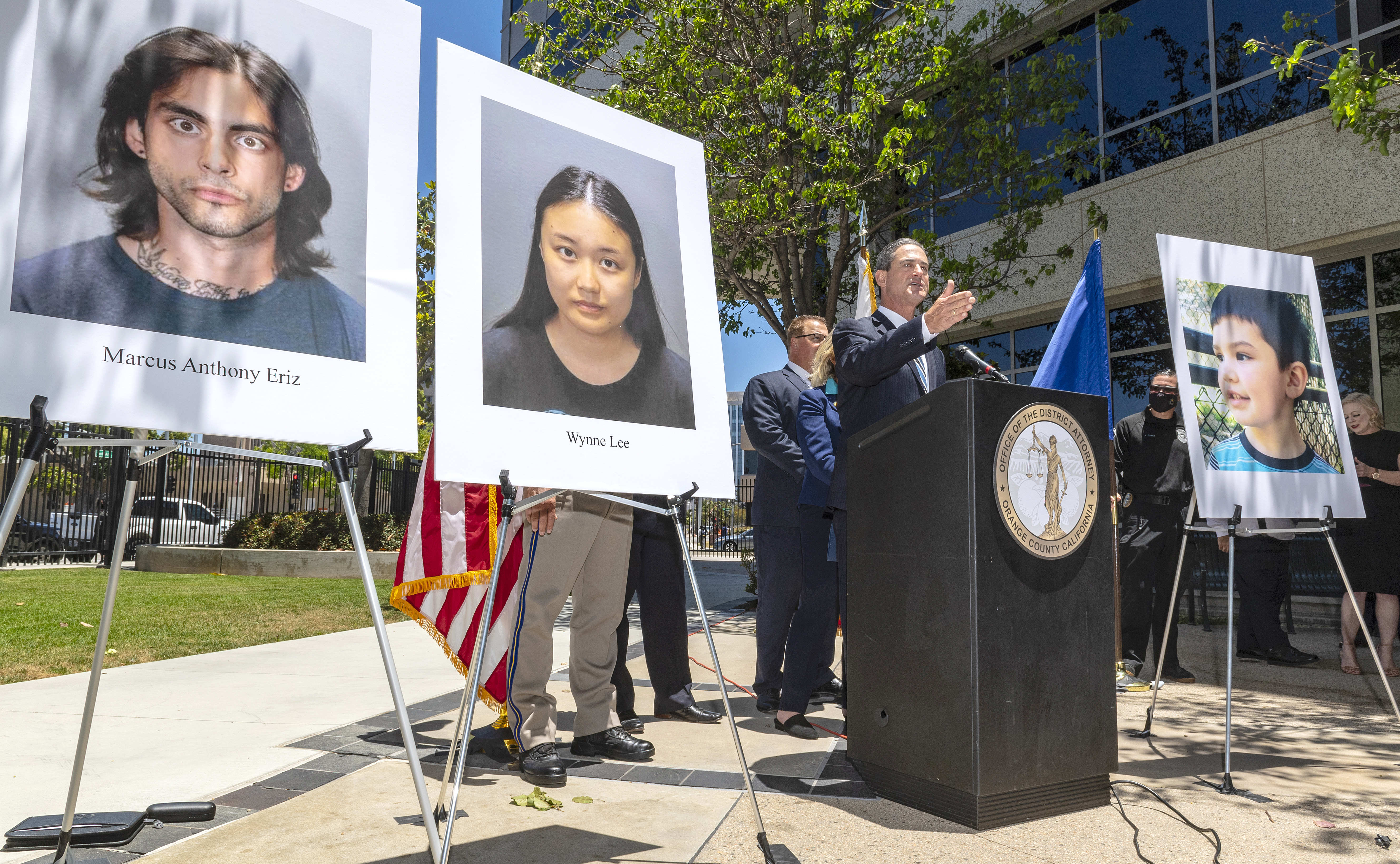It was like a scene from a movie.
On February 28, 1997, two men covered in Kevlar stormed a North Hollywood Bank of America and ran out with $350,000.
Police, armed with only 9 mm pistols and shotguns, raced to the scene from across Los Angeles. They found themselves so outgunned that some frantically scrambled to a nearby local gun store to get the high-velocity weapons they needed to match the robbers' assault rifles.
"They were ready for war, that's the scary part," says LAPD Officer William Lantz, who was a rookie then, just days into the job, when he took a bullet to the knee.
Lantz, now a training officer with the department, had never seen anything like the North Hollywood shootout.
"They had masks on their faces," he says. "It was like a monster movie."
The two bank robbers, Larry Phillips, 26, and Emil Matasareanu, 30, deflected police bullets with their homemade body armor. The pair may have earlier robbed at least two other San Fernando Valley banks in the same takeover style of the one they had just committed.
In their 44-minute-long last stand the duo wreaked terror, spraying more than a thousand rounds of ammunition at anything that moved as the city watched on TV, gripped by the unbelievable scene streaming in from news helicopters hovering overhead the bank.
The North Hollywood neighborhood resembled a battlefield.
LAPD Sgt. James Zboravan was also a rookie back then.
Zboravan and his training officer Stuart Guy joined two detectives in taking cover behind a parking lot locksmith kiosk across the street.
"Within a minute, the first suspect exits the bank with an AK-47," Zboravan says.
Zboravan aimed his shotgun and fired twice to try to stop the attack.
"Basically all that did was make him angry," he said.
He survived being hit four times by high-caliber bullets and was saved by a quick-thinking dentist across the street from the bank, who sheltered officers and worked to help stop the bleeding until help could arrive.
Borrowing a private armored truck, officers swooped in to rescue some of the injured, as SWAT arrived with sufficient weapons to take on the well-armed robbers.
Ultimately, police did stop the duo. Phillips threw down his assault rifle after it jammed, then turned his handgun on himself even as a police bullet found his spine.
Matasareanu was trying to return to his bullet-riddled would-be getaway car after a failed carjacking when SWAT raced up and took him down.
When the shooting stopped, 11 officers and seven bystanders had been injured and the two gunmen were dead.
Larry Welk, a news helicopter pilot who was above the incredible scene that day, can't shake the images from his mind. On the police radio he heard people screaming, cries for help, and calls for backup.
"This is something that I had never really heard before," he says. "You could tell that for the first time the LAPD felt like they were being outgunned."
"We had all been educated that day, that people could go get body armor, get automatic weapons, and they could overtake a police force. And it didn't feel good."
Dr. Jorge Montes, the dentist whose office was across from the bank, drew on his first-aid experience from Boy Scouts when he was pressed into service to help the wounded Zboravan and Detective William Krulac.
"I saw the heroics of the police officers," Montes says. "They are true heroes because they were thinking of the others, not of themselves."
The shooting changed the way police forces arm themselves.
News
Top news of the day
Lantz, the then-rookie cop who was shot in the knee, reflects on how the robbery and firefight changed how police do business. Departments started investing in better equipment and training and some officers are now qualified to use AR-15 assault rifles.
The cars also have Kevlar plates in the doors for added protection.
"Ever since the North Hollywood shootout a lot of things have changed ... the firepower, the body armor," he says. "Everybody knows about the North Hollywood shootout."



